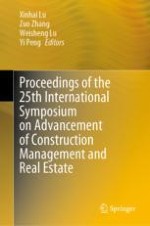2021 | OriginalPaper | Buchkapitel
A Study on the Urban Multi-center Spatial Structure Based on POI Data—Taking Guangzhou as an Example
verfasst von : Fan Wu, Yue Zheng, Zhiyuan Hu, Cheng Wen, Jiabin Duan, Yushi Peng, Yehuang Tu, Mingquan Wang
Erschienen in: Proceedings of the 25th International Symposium on Advancement of Construction Management and Real Estate
Verlag: Springer Singapore
Aktivieren Sie unsere intelligente Suche, um passende Fachinhalte oder Patente zu finden.
Wählen Sie Textabschnitte aus um mit Künstlicher Intelligenz passenden Patente zu finden. powered by
Markieren Sie Textabschnitte, um KI-gestützt weitere passende Inhalte zu finden. powered by
